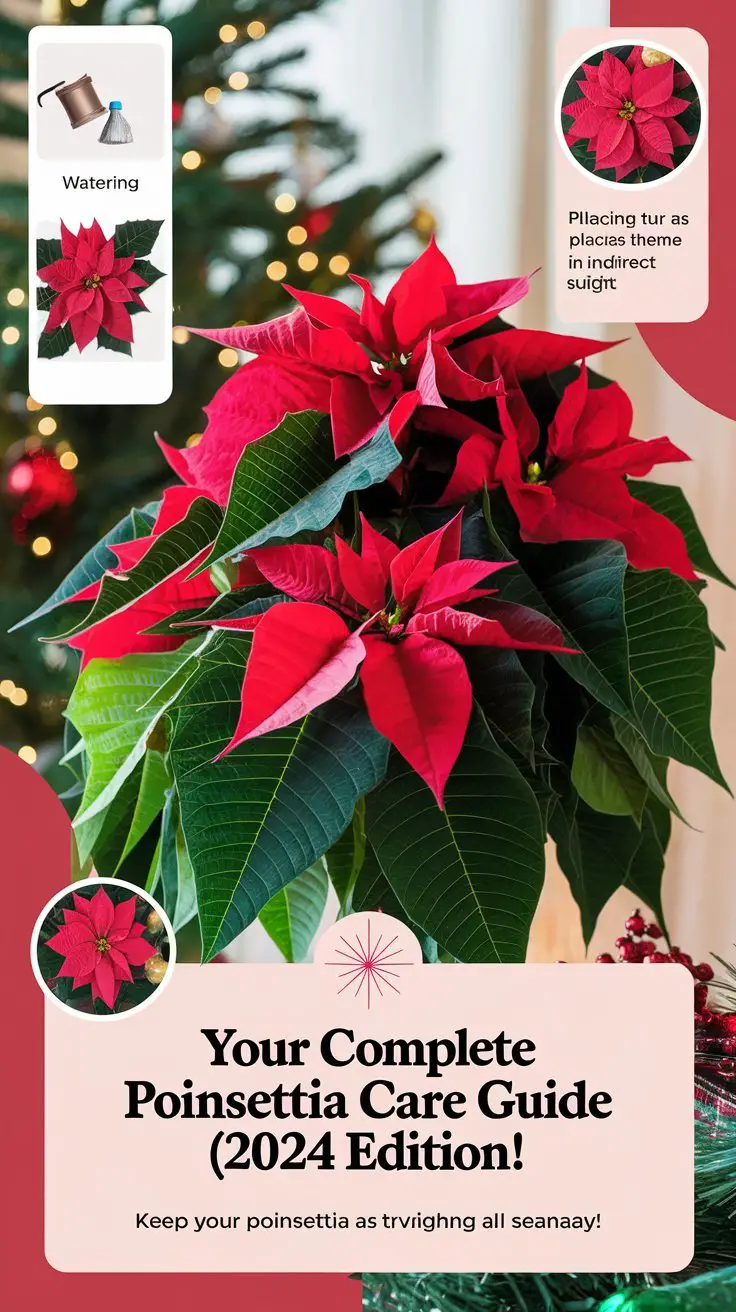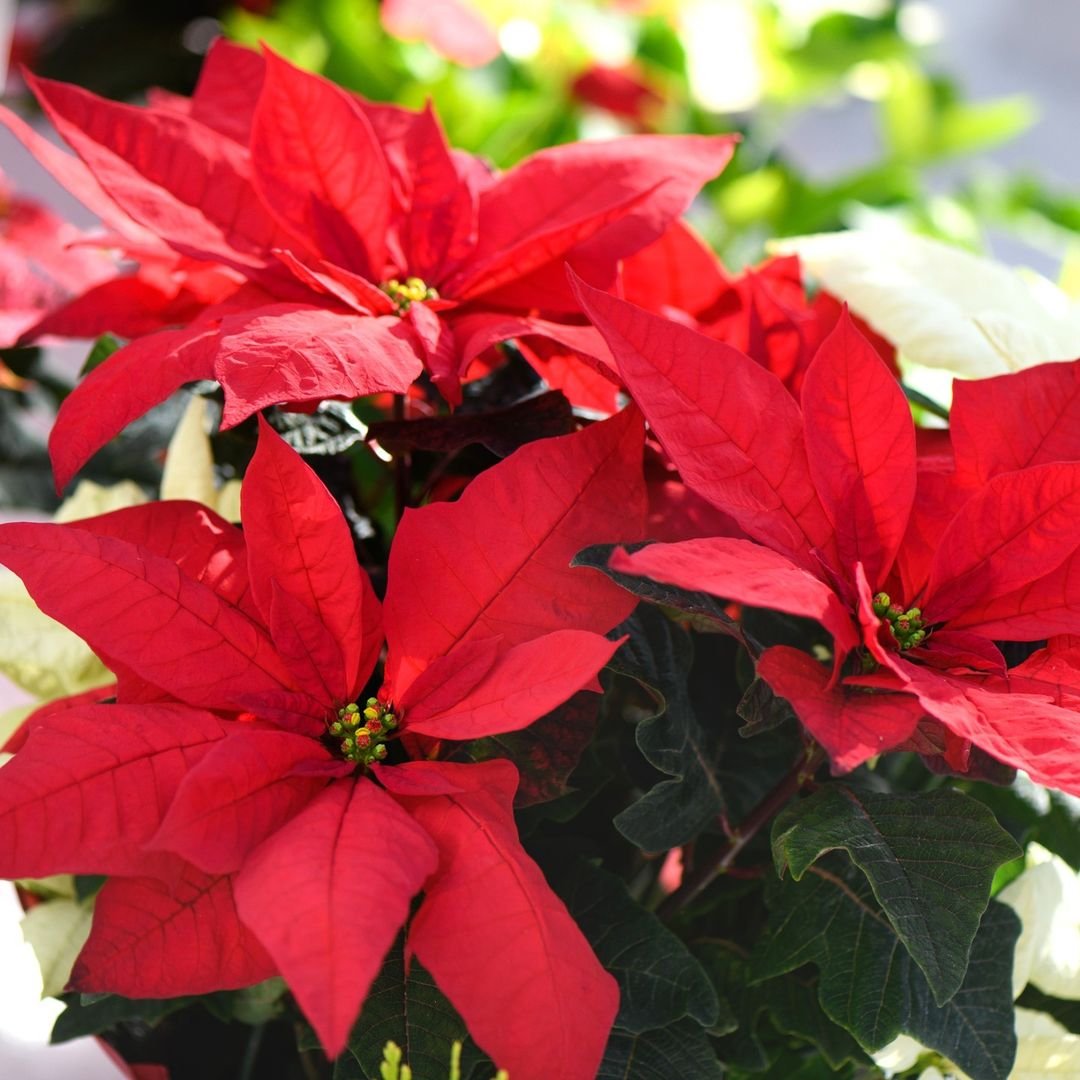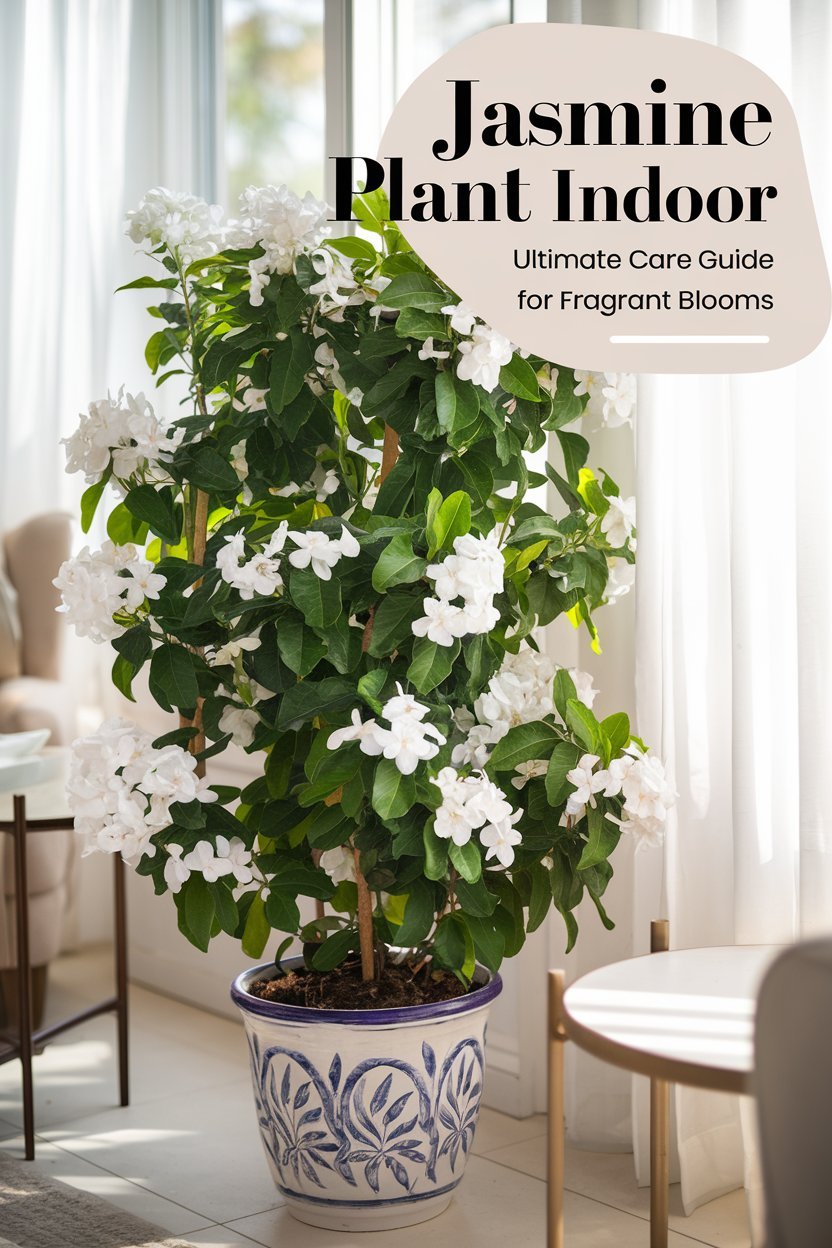Discover how to grow and care for poinsettia, the iconic Christmas flower. Learn expert tips on cultivating vibrant blooms, maintaining color, and year-round care. Perfect for holiday enthusiasts and plant lovers alike.
Poinsettia (Euphorbia pulcherrima) are popular ornamental plants known for their vibrant red bracts, often mistaken for flowers. They require bright, indirect light, consistent moisture without waterlogging, and temperatures between 65-70°F (18-21°C). With proper care, poinsettias can retain their color for several weeks and even be kept as perennial plants.
As a horticulturist specializing in ornamental plants for over two decades, I’m thrilled to share my expertise on poinsettias, the quintessential Christmas flower. Whether you’re looking to keep your holiday poinsettia thriving or aiming to grow these stunning plants year-round, this comprehensive guide will equip you with all the necessary knowledge.
Here’s a clear and concise chart for the Poinsettia Flower:
| Category | Information |
|---|---|
| Botanical Name | Euphorbia pulcherrima |
| Common Name | Poinsettia |
| Plant Type | Perennial (in warm climates), typically grown as an annual |
| Hardiness Zone | USDA Zones 9–11 (outdoors) |
| Sun Exposure | Bright, indirect light |
| Soil Type | Well-draining, loamy or sandy soil |
| Watering | Water when the top inch of soil is dry; avoid waterlogged soil |
| Growth Habit | Upright, bushy |
| Height/Spread | 2–3 feet tall, 2–3 feet wide |
| Special Features | Iconic holiday plant, vibrant bracts (not true flowers), sensitive to cold temperatures |
Understanding Poinsettias

Poinsettias are native to Mexico and belong to the Euphorbiaceae family. What most people consider to be the flowers are actually colored leaf-like bracts. The true flowers are the small, yellow structures at the center of the bracts, called cyathia.
For more botanical information, visit the University of Vermont’s poinsettia fact sheet.
Popular Poinsettia Varieties
- ‘Prestige Red’: Traditional bright red
- ‘Marble’: Pink and cream variegated
- ‘Ice Punch’: Red with frosty white centers
- ‘Winter Rose’: Curled bracts resembling rose petals
- ‘Jingle Bells’: Red bracts speckled with pink or white
For a comprehensive list of poinsettia cultivars, check out the University of Florida’s poinsettia cultivar database.
Growing Poinsettias

Light Requirements
Poinsettias thrive in:
- Bright, indirect light for 6-8 hours daily
- Protection from direct sunlight, which can fade the bracts
- Consistent light exposure to maintain bract color
Temperature and Humidity
Optimal conditions include:
- Daytime temperatures between 65-70°F (18-21°C)
- Nighttime temperatures no lower than 60°F (15°C)
- Moderate humidity (around 50-60%)
Soil and Potting
Use well-draining potting mix:
- Equal parts peat moss, perlite, and vermiculite
- Ensure pots have adequate drainage holes
- Repot annually in spring if keeping as a perennial
For more on potting mixes, visit Penn State Extension’s guide.
Caring for Poinsettias
Watering
- Water when the top inch of soil feels dry
- Ensure thorough drainage to prevent root rot
- Avoid getting water on the bracts to prevent fungal growth
Fertilizing
- Feed monthly with a balanced, water-soluble fertilizer
- Reduce fertilization during the blooming period
- Resume regular feeding in spring for perennial plants
Pruning and Maintenance
- Remove faded and dried parts of the plant
- Prune back to 4-6 inches in spring to encourage bushiness
- Pinch growing tips in summer for a fuller plant
For detailed pruning instructions, check out Clemson Cooperative Extension’s poinsettia care guide.
Reblooming Poinsettias
To encourage poinsettias to rebloom:
- From October 1st, ensure 14 hours of complete darkness daily
- Maintain this light/dark cycle for 6-8 weeks
- Return to normal light conditions when color starts showing on the bracts
Learn more about the reblooming process from the University of Minnesota Extension.
Common Issues and Troubleshooting
Leaf Drop
- Cause: Often due to temperature fluctuations or drafts
- Solution: Maintain consistent temperature and protect from cold drafts
Yellow Leaves
- Cause: Usually indicates overwatering or poor drainage
- Solution: Adjust watering habits and ensure proper drainage
Fading Bracts
- Cause: Excessive light exposure or aging
- Solution: Provide appropriate light conditions and replace annually if desired
For more on poinsettia problems, visit Texas A&M AgriLife Extension’s guide.
Poinsettias are more than just holiday decorations; with proper care, they can be stunning additions to your plant collection year-round. By providing the right light, temperature, and care, you can enjoy these vibrant plants for weeks during the holiday season or even year after year. Remember, patience and consistency are key when it comes to poinsettia care. Happy growing!
For more in-depth information on poinsettia cultivation, visit the USDA’s Floriculture Crops Summary
For more gardening tips and plant care guides, visit usagardenhub.com.





One comment on “Poinsettia Flower : The Ultimate Guide to Growing and Caring for the Christmas Flower (2024)”